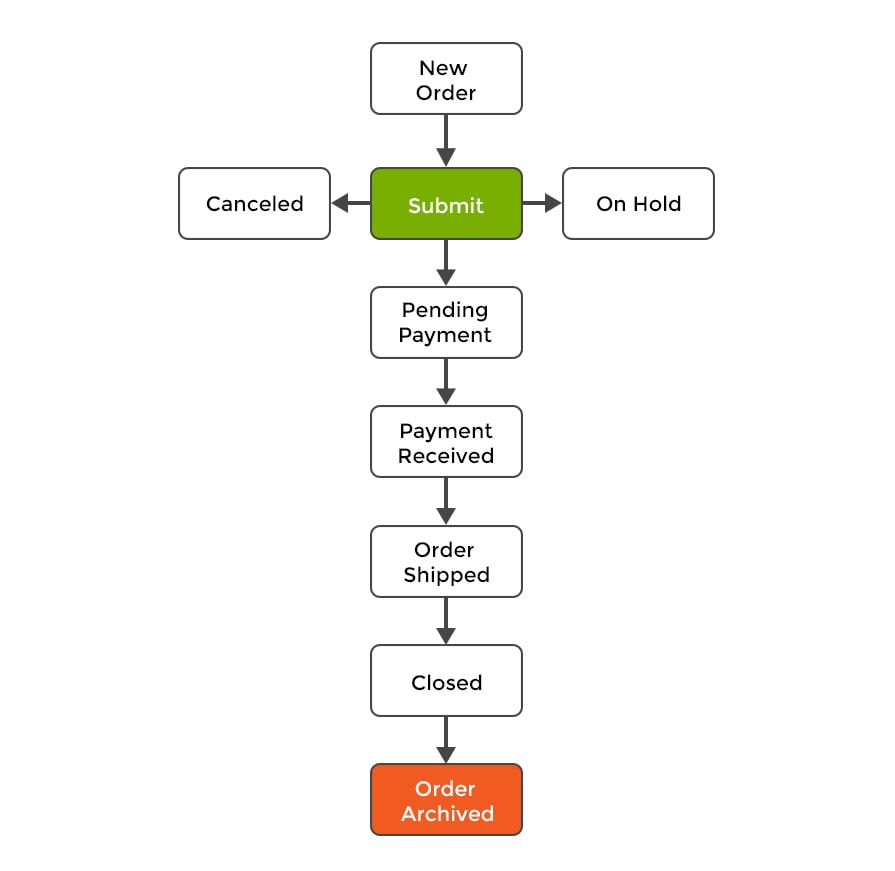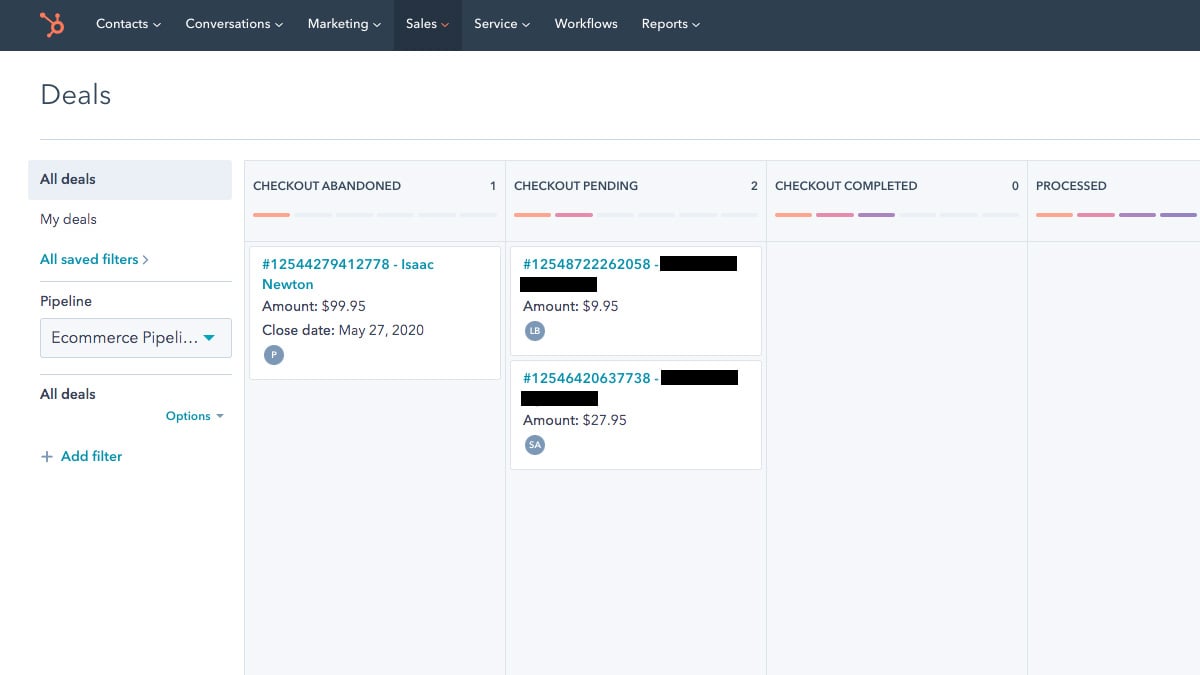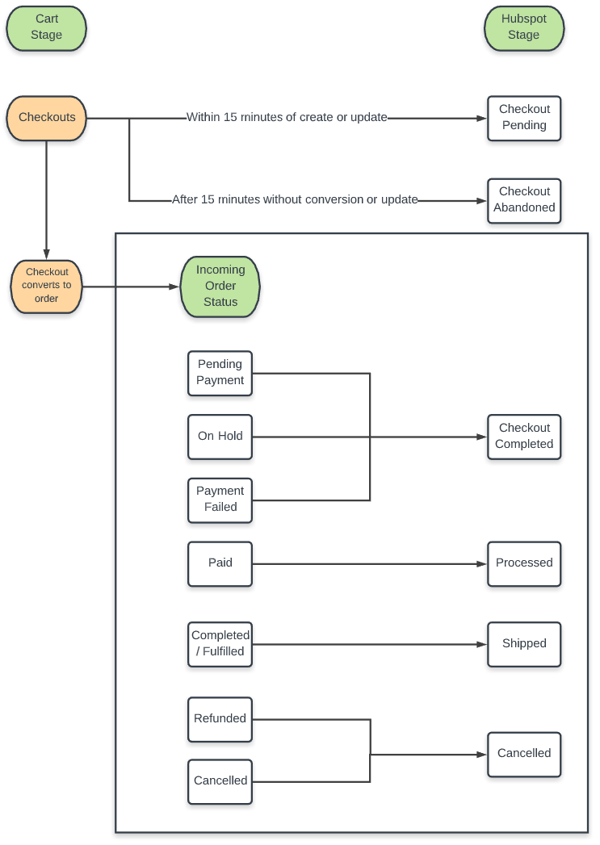Today, almost every online business has a need for integrations, and the industry has answered! There are now a large number of integration platforms such as Zapier, Workato, IFTTT (If This Then That). It is easier than ever to connect two or even more things together and play Double Dutch!
But don’t let that “ease” fool you - sometimes just grabbing the first thing off the shelf can cause you more work, take more time, and create more problems in the short AND long run. They might even hurt your brand if the wrong messages are sent to the wrong customers. These horizontal types of integrations are just syncing data for data’s sake and not putting a well thought out system in place for e-commerce data inside of HubSpot.
In this article, I will talk about why these ‘plumbing’ types of integrations are the wrong tool for the job for e-commerce integration to HubSpot, why they cost more money, more time, and more stress for you as a busy e-commerce company.
Horizontal integration platforms are too general for e-commerce
Don’t get me wrong - we really like Zapier and we use it inside of our business, but it’s the wrong tool for the job of integrating your e-commerce store to HubSpot. These tools fulfill the integration needs of ANY type of business. Meaning, they are not built for any specific industry or use case.
Ecommerce data has a Lifecycle
Ecommerce data has a lifecycle. For example, when a new customer places an order, that is not where it stops! The order goes through its own stages. For example, see Magento’s order status workflow shown here on Trellis’s blog:

Image credit: Trellis https://trellis.co/blog/change-order-statuses-magento/
When the order gets synced to HubSpot, you will need to update it every time it progresses to a different state. Zapier and others can and do sync updated data, but you will have to set all that up manually by creating a “search” step in Zapier to first find the order you need to update and then update it. Oh, and you will need a different zap from the zap that creates the order the first time.
I’d like to add, Zapier assumes that you know exactly how and when the data should be updated inside of HubSpot and that you will set it up correctly and for every entity like customers, products, orders, and so on. Remember uncle Ben’s quote from Spiderman? “With great power comes great responsibility.”
Somehow, I don’t think you want the responsibility of making sure all the important data from the thousands of very specific events happening in your store every hour are syncing correctly to HubSpot. Do it wrong and your customers could get the wrong messages at the wrong time. For example, sending a coupon after the customer already completed the order will cause harm to your reputation and brand. To do it right, you will need to spend a lot of time - probably months - when you factor in the amount of troubleshooting you will do and fix up bad data being in the wrong place inside of HubSpot. The last thing you want is bad data inside of HubSpot because one of the biggest strengths of HubSpot is being your central data hub.
The Unific to HubSpot integration, on the other hand, is built specifically for the e-commerce retailer. It already knows that you need to update that existing order and keep it in sync with the store and it already listens to all the relevant events that you need to run your marketing. With Unific, we have figured out what problems you will run into and built the integration to avoid them. It’s all in the box!
Abandoned cart recovery is the perfect example of the complexity of integrating with HubSpot
Abandoned cart recovery is one of the best opportunities to increase revenue for almost any online store and HubSpot is the perfect email tool to send out multiple abandoned cart recovery emails. Yet, if you want to sync abandoned cart data from your online store to HubSpot with Zapier it will not be easy to configure.
An abandoned cart from the store should be handled like this in HubSpot:
- When a customer is checking out, create a deal in the HubSpot Ecommerce pipeline with the stage “CHECKOUT PENDING”
- If the customer has not completed the order and 15 minutes or more have passed, move the deal to the stage “CHECKOUT ABANDONED”
- When this happens, a workflow for abandoned cart must be triggered to send an abandoned cart recovery email
- User opens the email
- Clicks the abandoned cart recovery URL
- Completes the order
- In HubSpot, that deal moves to deal stage “CHECKOUT COMPLETED”
- Any workflows for abandoned cart will stop so the customer doesn’t get any more abandoned cart emails
- If any workflows are configured to trigger on “CHECKOUT COMPLETED” deal stage they will be triggered.
With Zapier, steps 7, 8 and 9 may not even be possible to do without knowing a lot of technical details of how the shopping cart’s abandoned cart feature works. I’m not sure if it’s even possible.
Here’s why:
- In HubSpot, that deal should be moved to “CHECKOUT COMPLETED“ but it won’t because the abandoned cart is now a real order in the store with its own Order ID.
- All HubSpot knows is that there is a deal in the “CHECKOUT ABANDONED” deal stage.
- HubSpot doesn’t know that there’s now a real order that was converted to an order, because an abandoned cart event from the store is different from the new order event.
- Thus each event has a different ID.
- You will have to figure out how to map the abandoned cart Deal with a real order Deal. THEN you can find which deal needs to be updated.
Do this wrong, and the wrong people could get the wrong abandoned cart URL to check out. In the process, hurting your ability to convert those abandoned carts and damaging your reputation and brand.
Abandoned carts are too complex for Zapier to handle, further driving home the point that Zapier is the wrong tool for the job for e-commerce integration to HubSpot.

Abandoned cart as a deal in HubSpot
The complex life cycle of an Abandoned Cart in HubSpot
With HubSpot you have the ability to use deal pipelines and deal stages for automation using workflows. All that raw power of HubSpot can be applied to making your customer's experience as personalized as possible.
According to Business Insider personalization leads to customer loyalty: “44% of respondents said they would likely become repeat buyers after a personalized shopping experience.”
Luckily you invested in HubSpot and you can really personalize the experience with deal stages, but attempting to do that with Zapier or another such platform is going to be very difficult. Just look at the lifecycle of an abandoned cart in the figure below. It will take you many many Zaps to do it right!
 Abandoned cart lifecycle in cart and hubspot
Abandoned cart lifecycle in cart and hubspot
There’s just too much important Ecommerce data to map by yourself (or someone on your team).
The thing about data is that you never know when you need more of it. Whether you are trying to just create a new report or try a new growth idea and you need to add a customer to a list based on criteria you never thought of before or what have you. There are just too many unknowns to guess what data you will need inside of HubSpot from your store beforehand. We know this first hand from running our own business.
Given that there are lots of unknowns, it will just slow you down and add just a little more friction every day that you struggle with making Zapier work for you. Unific has pre-mapped all the properties relevant for most ecommerce businesses so that you can get to work on the challenges unique to your business. We’ll discuss this more below.
The data mapping struggle with Zapier
You will have to tell Zapier how to map each and every property in the store that you need to a property in HubSpot.
You will have to create a “When this happens, do this” task for lots of events in your store. These are just a few:
- Order create
- Order update
- Customer create
- Customer update
- Abandoned cart create
- Abandoned cart update (not possible to do in Zapier today)
- Product create
- Product update (not possible to do in Zapier today)
You will also have to add ‘mappings’ for properties for every event I listed above. For example, map the billing address line 1 from the order to billing address line 1 property in HubSpot deal record.
A sample of the fields you will have to map from order object to the deal object using Zapier
With Zapier If you make a mistake or need to add more, you might have to go through all the mappings again and then test them again too. Tedious and not a good use of time!
With Unific, you get 150 fields pre-mapped out of the box with ability to customize where you need to
Unific automatically maps and syncs over 150 fields from your store to properties in HubSpot by default. That is across customers, orders, abandoned carts, AND products. Unific also supports creating custom mappings if you have custom data that needs to be mapped to properties in HubSpot.
Here is our list of pre mapped properties per cart:
You don’t need to lift a finger to map these properties! It all comes out of the box when you sign up. Plus, we’re always adding more fields as our customers (merchants like you) discover the fields they need to be mapped. You get to benefit from everyone who has joined our platform before you and asked for a mapping we didn’t think of before (over 2,000 customers and counting!).
Horizontal platforms are not always cheaper
The biggest costs for using a horizontal platform like Zapier instead of an ecommerce integration platform like Unific come from learning time, setup time and maintenance time. But there’s also the hard cost of syncing the data itself. Zapier and others charge by the number of “tasks” it takes to keep data up to date in Zapier.
As we learned above, Ecommerce data has a lifecycle. So as a merchant, you are not looking for a one time sync, but a continuous sync. Zapier, by charging per task, is costing you more every time an order is updated as it moves through its life cycle, or a customer moves through their lifecycle in the shopping cart.
Unific’s paid plan is usage based. It charges a per order fee to sync, but only charges for unique orders. Thus if an order gets updated once OR 500 times, the cost to you is the same as if it was updated once. Unific is also FREE for less than 1,000 orders per month so you can use it for a long time without having to uppgrade.
Lastly, we know that Ecommerce is seasonal, so a usage based cost makes the most sense for ecommerce. With Zapier, you pay monthly for a number of tasks - however in the peak holiday season, you might need more tasks than during normal times and you will be forced to upgrade. More importantly, it would be a shame if you paid for extra sync capacity you didn’t need if you forgot to downgrade after the holidays!
With Unific’s pricing model, you don’t have to worry, it will automatically adjust up or down because you are paying per order synced.
Bonus: Zapier charges for tasks - no matter if it’s a customer create or update, order create or update or product create. Unific ONLY charges per order synced - you get products and customers synced for free!
Summary
In this article we learned why horizontal integration platforms like Zapier are great tools, but not the right tool to integrate HubSpot with your online store. We took an in-depth look at how Zapier is not sufficient for Abandoned Cart data sync into HubSpot. We learned that there is just too much important data from your online store that you may miss out on by manually mapping the data and events with Zapier.
There are chances of human error which could cause the sync to be incorrect, causing you to send the wrong message at the wrong time - hurting your brand and reputation. It would also cause a lot of time and effort to be wasted in just troubleshooting the problem. Lastly, we also compared the costs of trying to maintain your own integration mapping system or just using Unific’s pre-mapped properties.
